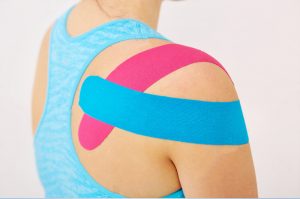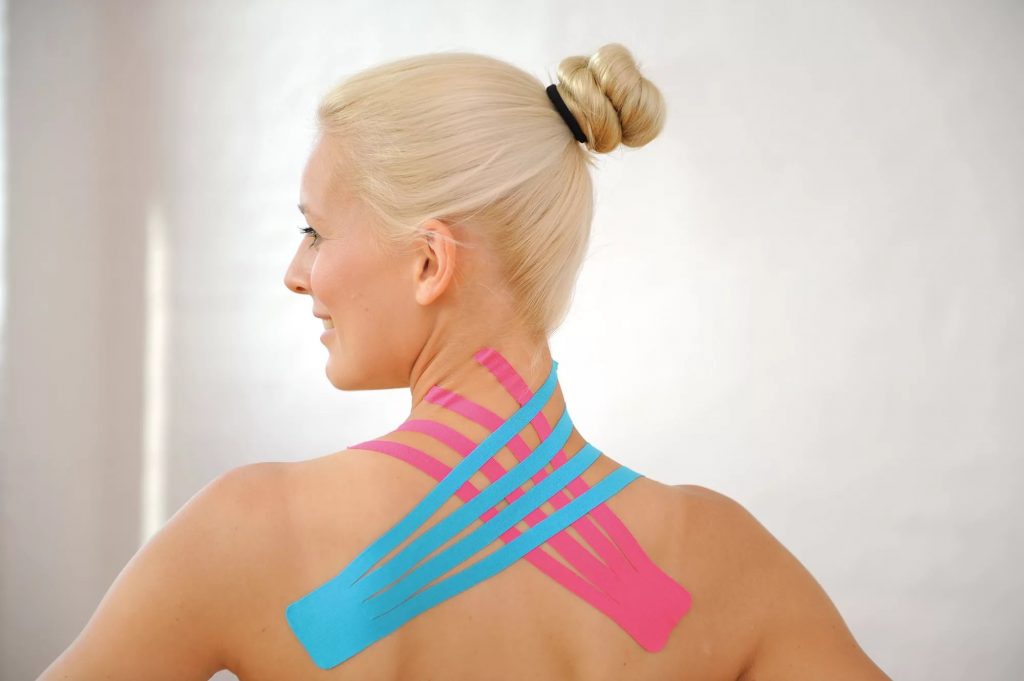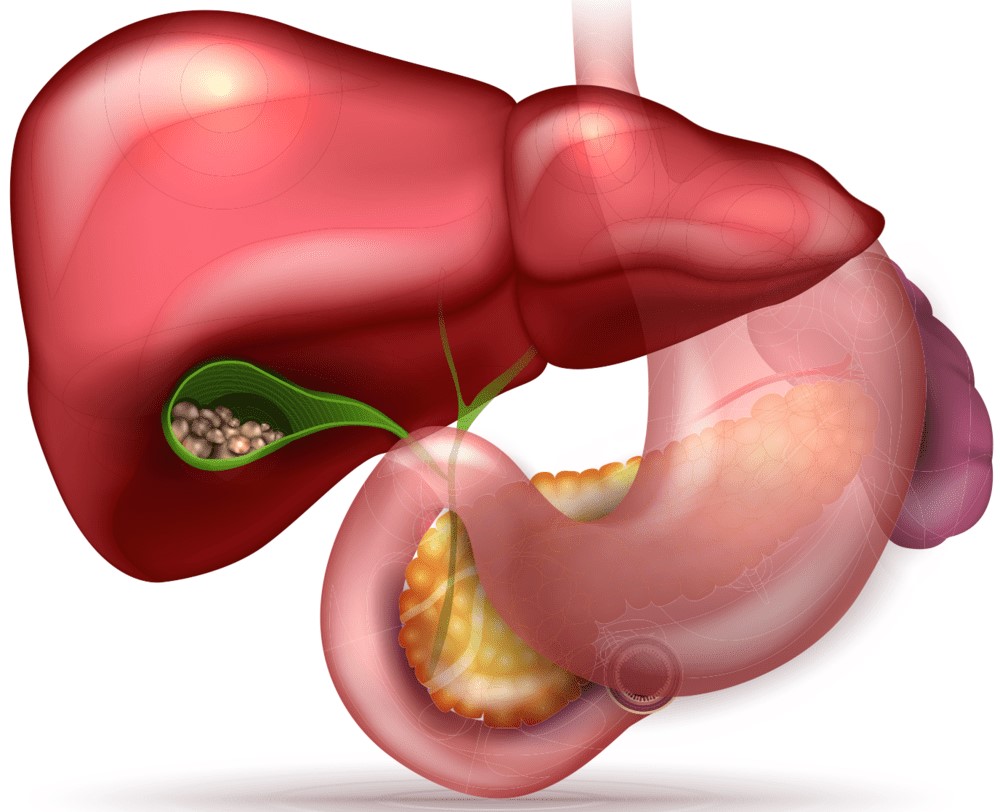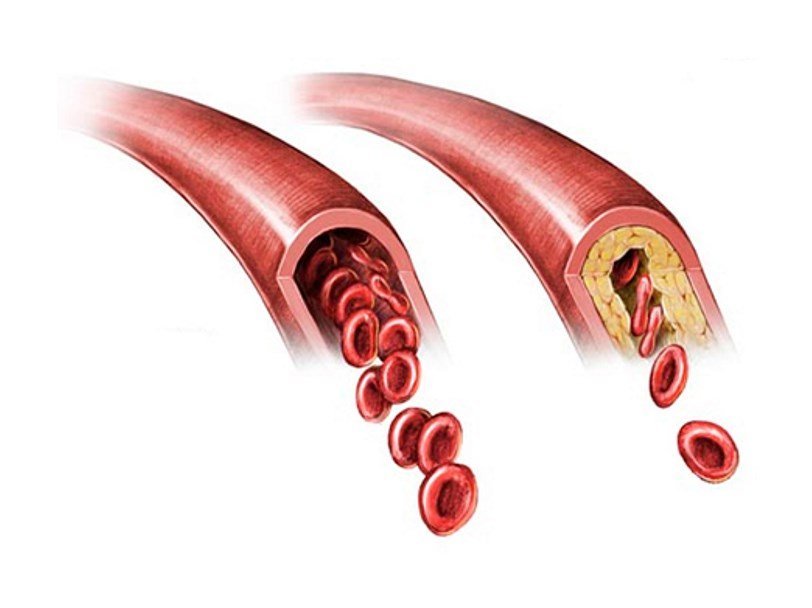The term “taping” comes from the English word tape [teip], which translates as “tape” or “duct tape”. This is one of the methods of functional treatment and prevention of injuries and diseases of the musculoskeletal system.
This technique was first used in sports medicine. The fixation of muscles and joints with elastic tapes was first used in 1988 at the Seoul Olympics. It has been proven that the work of muscles and joints is greatly helped by the physical impact of the elastic tape applied to them. And now, if you look at the pictures on the request “teip”, there will be many photos from sports competitions. Thanks to the clear positive result of its use, the technique has spread from sports to conventional medicine. Kinesiological taping (kinesio “kinesio” – movement, means that taping does not restrict movement) is used for pain in muscles, joints, to reduce swelling and bruising after injuries. And also for the prevention of sports injuries, acceleration of recovery after stress.
For what diseases and problems is taping used?
Taping is used in:
traumatology
surgery
neurology
orthopedics
rehabilitation
pediatrics.
Taking into account the anatomy, physiology and specificity of each patient, the pattern of overlaying the tapes can be completely different.
In our center, doctors underwent special training in taping to work with joints in case of injuries, dislocations, sprains, correction of bursitis, arthrosis of the joints, as well as in neurology – to work with muscle tension, the consequences of strokes, pain syndromes, headaches, edema, consequences of cerebral palsy, as well as for the correction of pain syndromes in pregnant women. In manual therapy, taping is successfully used after sessions to consolidate the result and prevent subsequent pain syndromes. This technique is one of the options for helping patients with cancer, when physiotherapy, IRT, massage for pain in muscles and joints are contraindicated.
There are four techniques for applying tapes – muscle (to relax or tone up), articular – to block the joint, fascial – to correct posture disorders and lymphatic drainage – to reduce edema. The advantage of the technique is that the effect is very quick – the pain syndrome, when the tape is correctly applied, decreases or stops immediately.
Features of overlaying tapes
Apply the tape to non-fat skin. After applying the tape, it must not be heated and in contact with water for 2-3 hours. The tape is firmly fixed on the skin, then there are no restrictions when wearing it, you can wash, go to the pool. The frequency and duration of wearing teips is determined individually in each specific case, but on average, children are superimposed on them for two days, in adults, the wearing period can be increased to five, sometimes even up to seven days. The procedure is repeated a day after removal. The course is 3-5 sessions.
The tape itself is fabric-based, the glue is hypoallergenic, but individual intolerance to its components is possible, although rarely found.
You can remove the tape yourself; it is more convenient to do this in the shower, pouring it with warm water. Children should be sure to remove with water, as the tape adheres quite firmly to the skin.
The mechanism of action of the tape
If we consider the difference from other methods of fixation in case of injury, for example, corset braces and elastic bandages, the tape preserves and even increases the mobility of the injured limb. The stretching tape relieves some of the stress on the tendons and muscles. It supports, stabilizes muscles, joints and ligaments, improves the circulation of intercellular fluid, blood and lymph. Applying the tape, the doctor works with the fascia of the muscle, lifting it and moving it in the desired direction. In this place, blood flow improves, since a place is mechanically freed up for it. By shifting the fascia in the direction of muscle movement, you can relax it, if against the movement, the muscle tenses.
In neurology, tape is used in children with cerebral palsy to change muscle tone in the limbs and correct axial muscles. We often use it to correct scoliosis – together with massage and physiotherapy exercises.
In post-stroke patients with hemiparesis, to correct the skew of the pelvis and spine, which improves mobility, makes a more confident gait and reduces the risk of back pain.
Well, the most common reasons for using tape in neurology are back and neck pains. A multilayer tape is applied to the painful area of the spasmodic muscle using the articular technique, the “cupping” effect is achieved – the skin over the site of inflammation is lifted, and the focus of inflammation is reduced due to improved blood flow and elimination of toxins.
Taping is used to treat:
sprains of the ligaments;
bruises and sports injuries;
dislocations and subluxations;
pain in the shoulder, knee, back, neck, and other parts of the musculoskeletal system and limbs;
epicondylitis https://en.wikipedia.org/wiki/Epicondylitis;
osteochondrosis;
tunnel syndromes, in particular carpal tunnel syndrome;
in orthopedic rehabilitation after injuries and operations
Cerebral palsy


